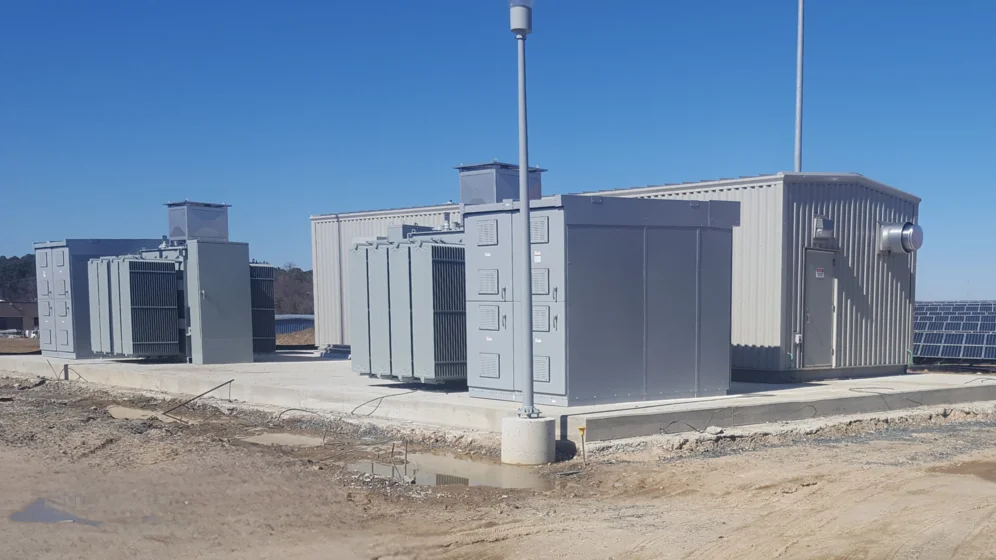
nVent TRACHTE E-House Solution for Major Wastewater Treatment Plant in the DC Metro Area
A major Wastewater Treatment Plant (WWTP) in the DC Metro area, operational since 1911, spans 466 acres and serves approximately 1.3 million residents across a 140-square-mile region. The facility utilizes a 35-foot elevation difference to allow gravity-based wastewater flow from influent to outfall.
Despite its large scale and importance, the plant faced significant challenges:
- Aging Infrastructure: Most equipment dated back to the mid-1900s with minimal upgrades.
- Capacity Issues: Originally designed for 180 million gallons per day, the plant was regularly exceeding capacity during peak flow periods.
- Manual Operations: Outdated switchgear and lack of remote monitoring and communications technology hindered operational efficiency.
- Frequent overflow during storm surges resulting in untreated sewage discharging into nearby rivers, prompted temporary EPA oversight and a mandatory system upgrade.
PROJECT SCOPE
Because of our technical expertise and long-term partnership with a major OEM equipment manufacturer and the project’s engineering firm, we were selected to join the design team and help develop the project specifications for the WWTP electrical system upgrade.
The primary goal was to provide a new medium-voltage (MV) electrical system that could power new operational equipment like large influent and effluent pump stations. The project also included multiple low voltage (LV) electrical systems designed to power clarifiers, filters, separators, scrubbers, and chemical treatment systems.
To support the modernization of the WWTP, nVent TRACHTE switchgear interfaced with a comprehensive SCADA (Supervisory Control and Data Acquisition) system. This system was essential for managing overall plant operations, plus Balance of Plant (BOP) infrastructure and improving operational control of the WWTP. Primary and secondary e-houses were supplied to protect the new switchgear equipment.
SCADA System Overview
SCADA is an industrial control system that enables operators to monitor and control processes remotely. It is especially critical in large-scale facilities like WWTPs, where real-time data and centralized control are vital for systems operation and data reporting.
SCADA Core Functions
- Data acquisition from sensors and field devices.
- Monitoring of system performance and status.
- Remote control of pumps, valves, and other equipment.
- Alarming for abnormal conditions.
- Data logging and reporting for compliance and analysis.
APPLICATION NOTES: Power and Control Infrastructure
- E-House Deployment: A Primary 38kV class switchgear building was installed to centralize and modernize power distribution. Secondary 5KVA Single and Double Ended Unit Substations were provided and installed throughout the campus.
- Automation Upgrade: The new SCADA equipment provided an upgrade from manual to automated control, reducing labor intensity and improving safety and efficiency as well as compliance with the EPA requirements.
SOLUTION: System Integration
nVent TRACHTE provided (7) total control buildings across the 466-acre campus. The primary control building housed the medium voltage switchgear and a battery system for backup power. The e-house equipment communicated with balance-of-plant (BOP) equipment and enabled the Department of Public Works to control and monitor operations from a centralized hub.
nVent TRACHTE e-house solutions transformed a DC Metro Area WWTP from a manually operated, aging facility into a modern, automated, and remotely controllable infrastructure. Key outcomes included:
- Improved Compliance: Addressed EPA concerns by enhancing flow management and reducing overflow incidents.
- Operational Efficiency: Enabled real-time control and monitoring, reducing downtime and manual labor.
- Scalable Infrastructure: Provided a foundation for future upgrades and expansions.
- Strategic Partnership: Demonstrated the value of technical expertise and collaboration in delivering critical infrastructure solutions.